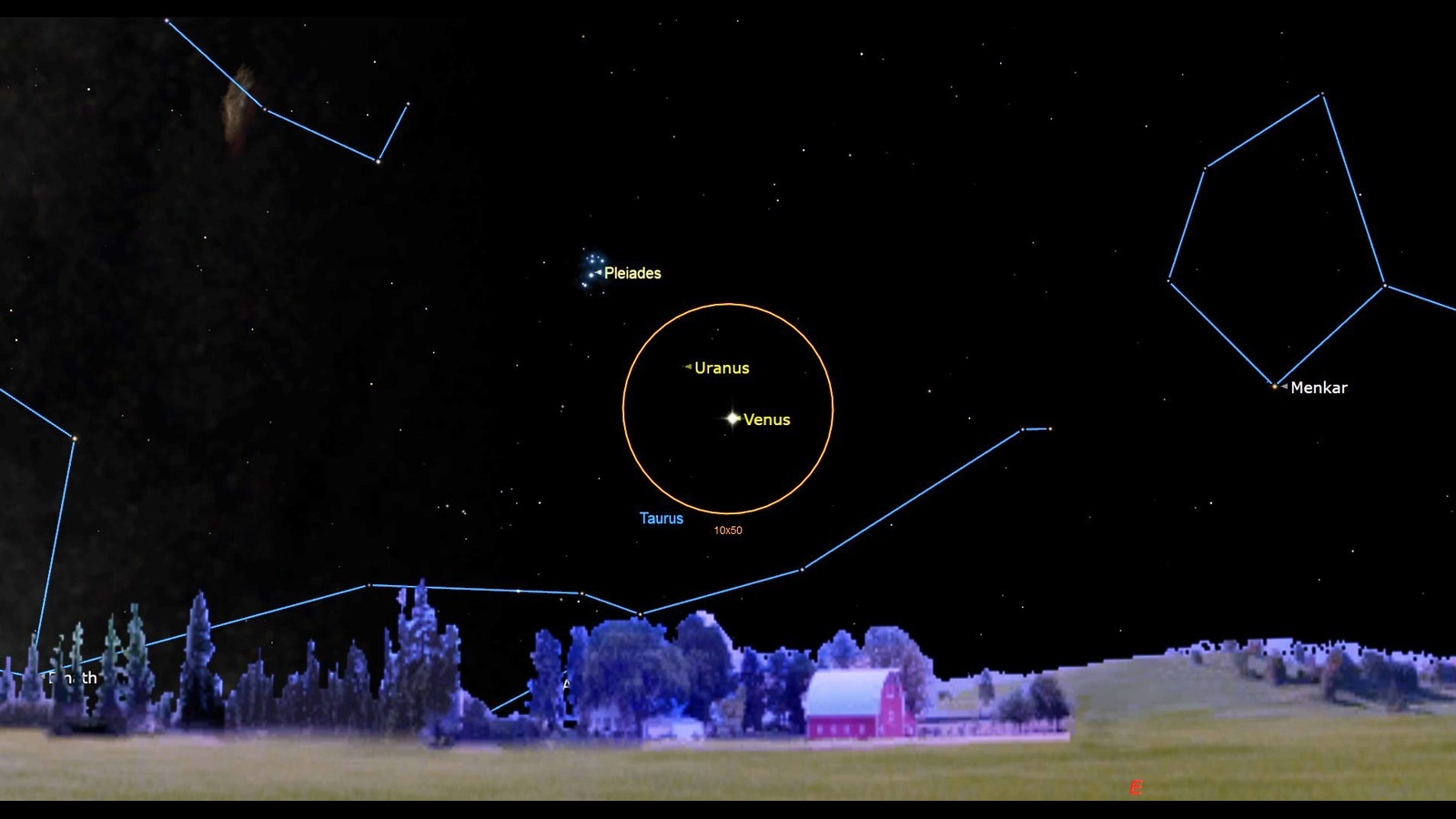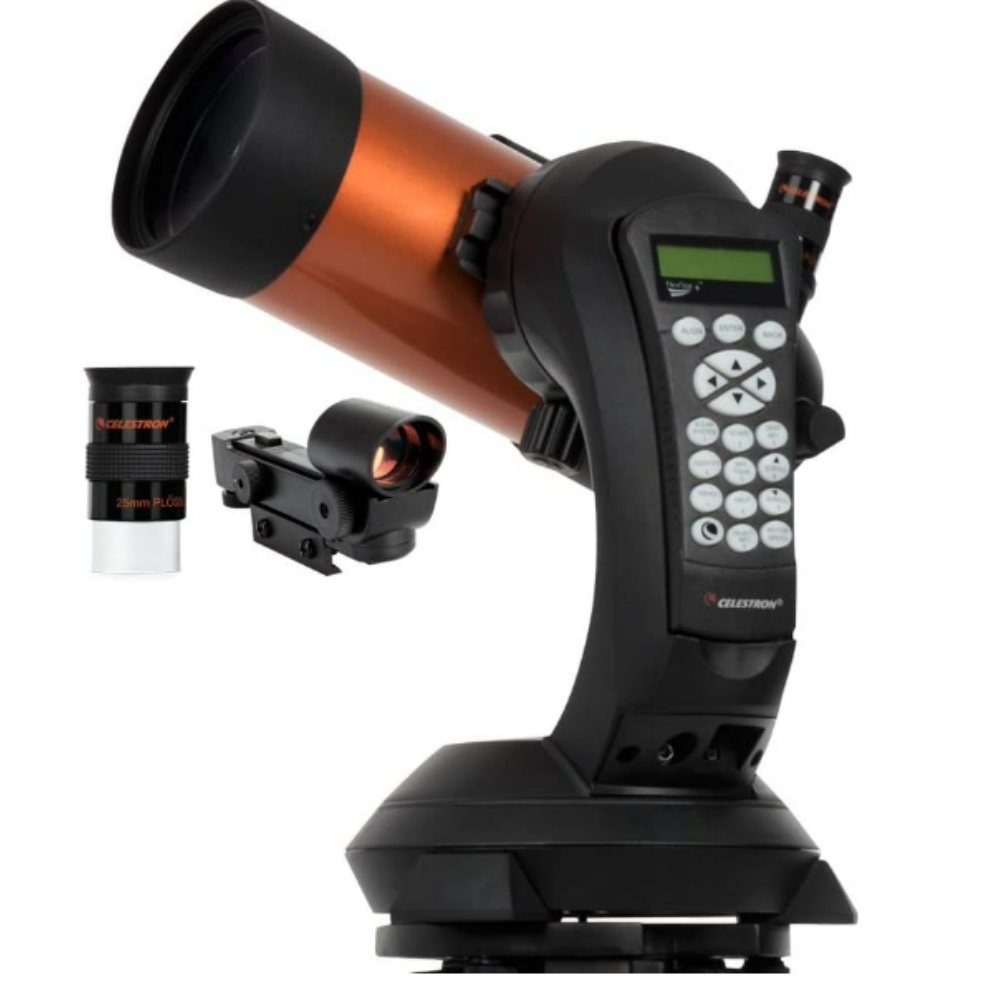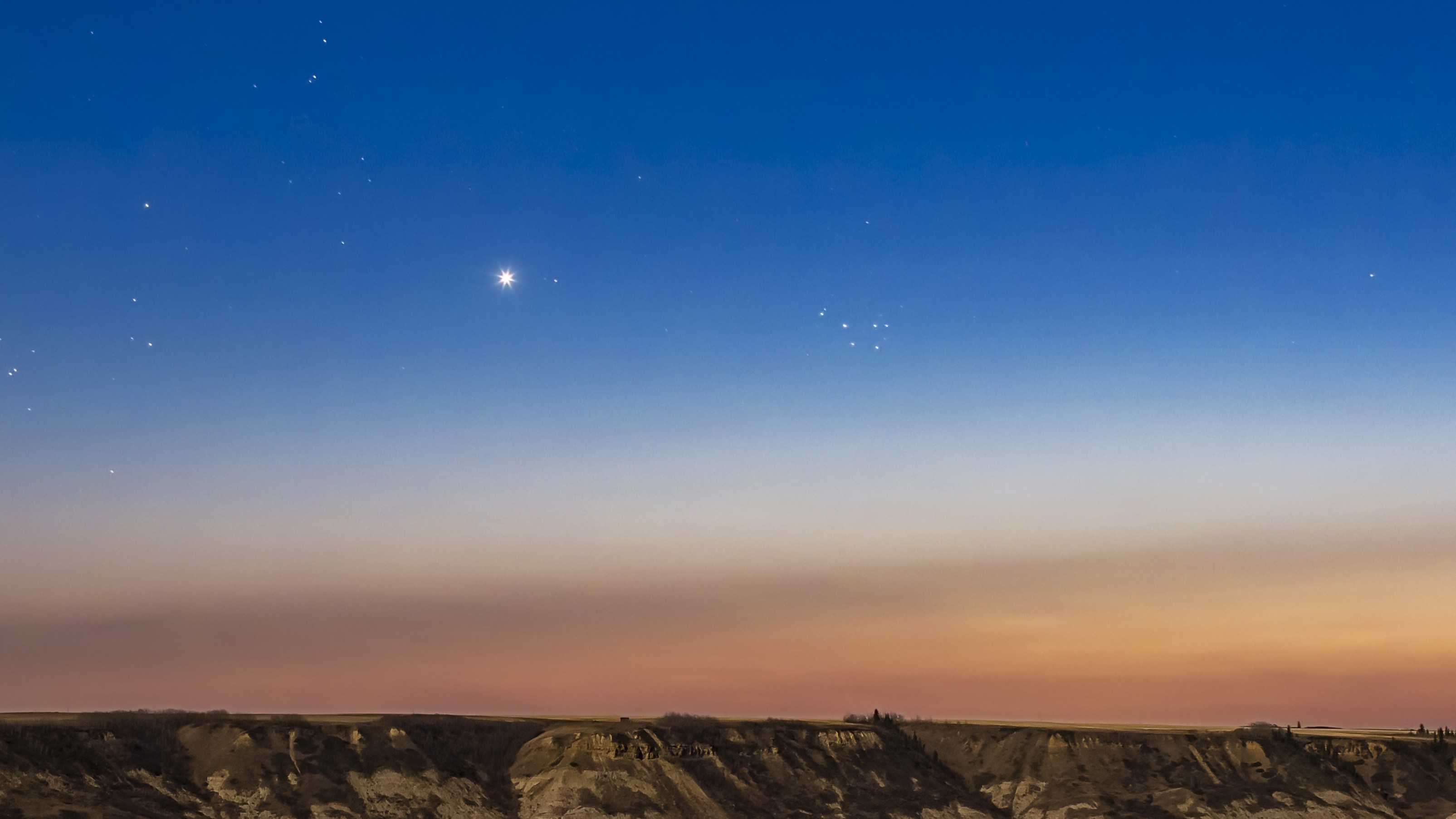Early risers are in for a celestial treat on July 5, when Venus appears as a bright 'morning star' alongside the magnificent Pleiades open star cluster in the eastern sky just before dawn.
Stargazers in the U.S. can see Venus rising around 3 a.m. local time, with the Pleiades star cluster visible as a smudge of light under dark sky conditions less than 7 degrees to Venus' upper left. To estimate that distance, hold a clenched fist at arm's length; it spans roughly 10 degrees of sky.
The cosmic duo will be visible for around two and a half hours before the glare of the rising sun hides the Pleiades from view. While the cluster is known to contain a multitude of blue-white stars, our naked-eye view of the Pleiades from Earth is largely dominated by its seven brightest members : Alcyone, Asterope, Celaeno, Electra, Taygete, Merope and Maia. The light from these stars is best viewed away from city lights and becomes easier to detect when the star cluster is in the periphery of your vision, where the cells that excel at night vision are at their densest.
The seven brightest stars can be picked out using a pair of 10x50 binoculars, while a telescope with an aperture of 4 inches or greater will reveal more of the cluster's thousand-strong stellar population.

Venus, meanwhile, is stunning to view with the naked eye alone, shining at magnitude -3.9. However, pointing a telescope with an aperture of 2.4 inches or greater with a magnification of 50x or more will allow you to pick out its moon-like phases, according to telescope-maker Celestron.
TOP TELESCOPE PICK:

Want to see the planets of our solar system for yourself? The Celestron NexStar 4SE is ideal for beginners wanting quality, reliable and quick views of celestial objects. For a more in-depth look at our Celestron NexStar 4SE review.
But wait, there's more! The ice giant Uranus is also present in the sky on July 5, positioned almost directly between Venus and the Pleiades. However, its relatively dim magnitude of +5.8 makes it incredibly challenging to spot with the naked eye. Remember, magnitude is the system astronomers use to keep track of how bright an object appears in our night sky. The lower the number is, the brighter the object. The human eye is capable of spotting objects brighter than magnitude +6.5 in dark sky conditions.
To see Uranus' tiny aqua disk you'll need a telescope with an 8-inch aperture. However, even then it will appear as little more than a blue point of light hanging against the starfield beyond.
Editor's Note: If you capture a picture of Venus with the Pleiades and want to share it with Space.com's readers, then please send your photo(s), comments, name and location to spacephotos@space.com.
.png)
 German (DE)
German (DE)  English (US)
English (US)  Spanish (ES)
Spanish (ES)  French (FR)
French (FR)  Hindi (IN)
Hindi (IN)  Italian (IT)
Italian (IT)  Russian (RU)
Russian (RU) 








Comments